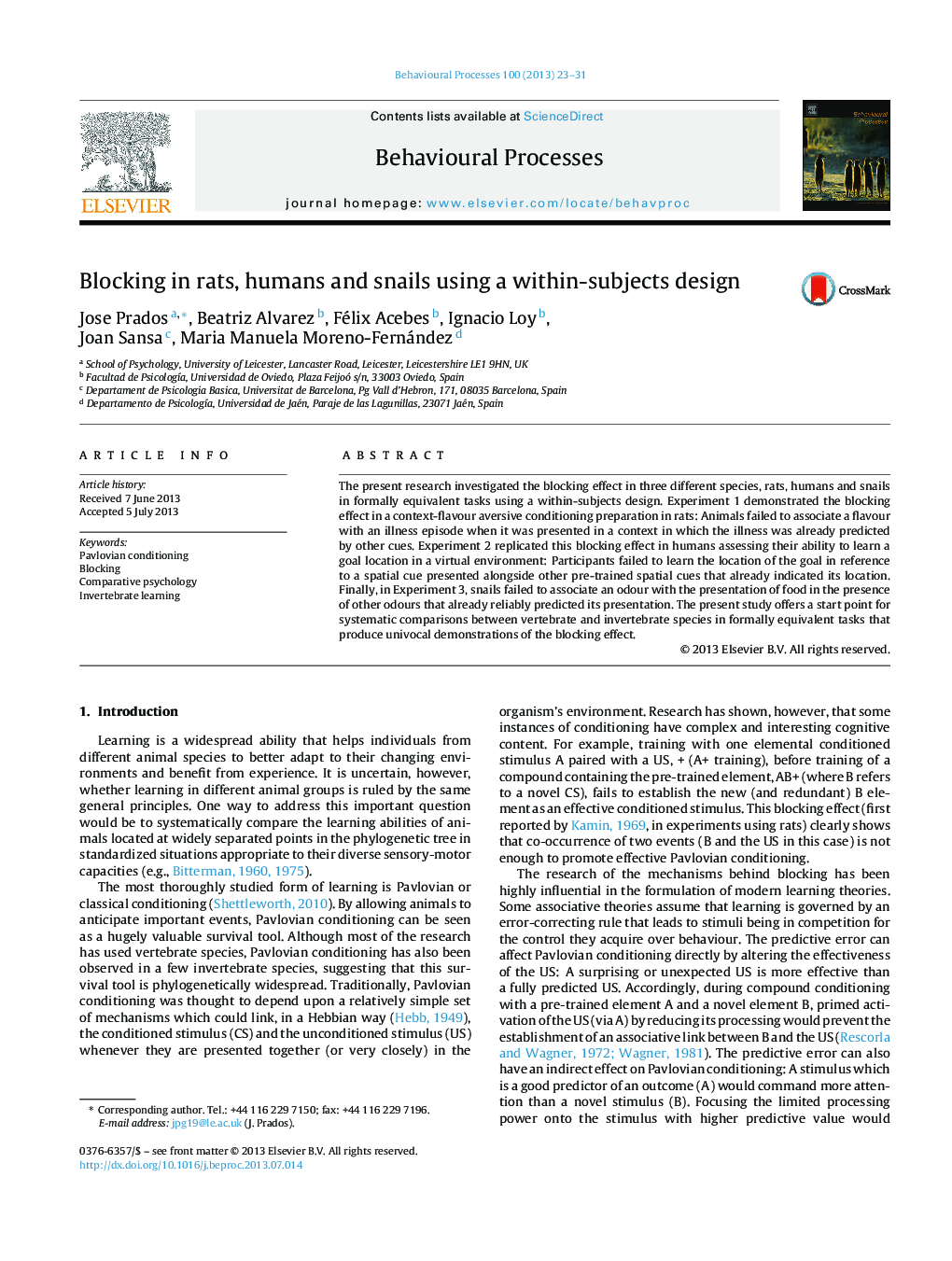| Article ID | Journal | Published Year | Pages | File Type |
|---|---|---|---|---|
| 8497401 | Behavioural Processes | 2013 | 9 Pages |
Abstract
The present research investigated the blocking effect in three different species, rats, humans and snails in formally equivalent tasks using a within-subjects design. Experiment 1 demonstrated the blocking effect in a context-flavour aversive conditioning preparation in rats: Animals failed to associate a flavour with an illness episode when it was presented in a context in which the illness was already predicted by other cues. Experiment 2 replicated this blocking effect in humans assessing their ability to learn a goal location in a virtual environment: Participants failed to learn the location of the goal in reference to a spatial cue presented alongside other pre-trained spatial cues that already indicated its location. Finally, in Experiment 3, snails failed to associate an odour with the presentation of food in the presence of other odours that already reliably predicted its presentation. The present study offers a start point for systematic comparisons between vertebrate and invertebrate species in formally equivalent tasks that produce univocal demonstrations of the blocking effect.
Related Topics
Life Sciences
Agricultural and Biological Sciences
Animal Science and Zoology
Authors
Jose Prados, Beatriz Alvarez, Félix Acebes, Ignacio Loy, Joan Sansa, Maria Manuela Moreno-Fernández,
